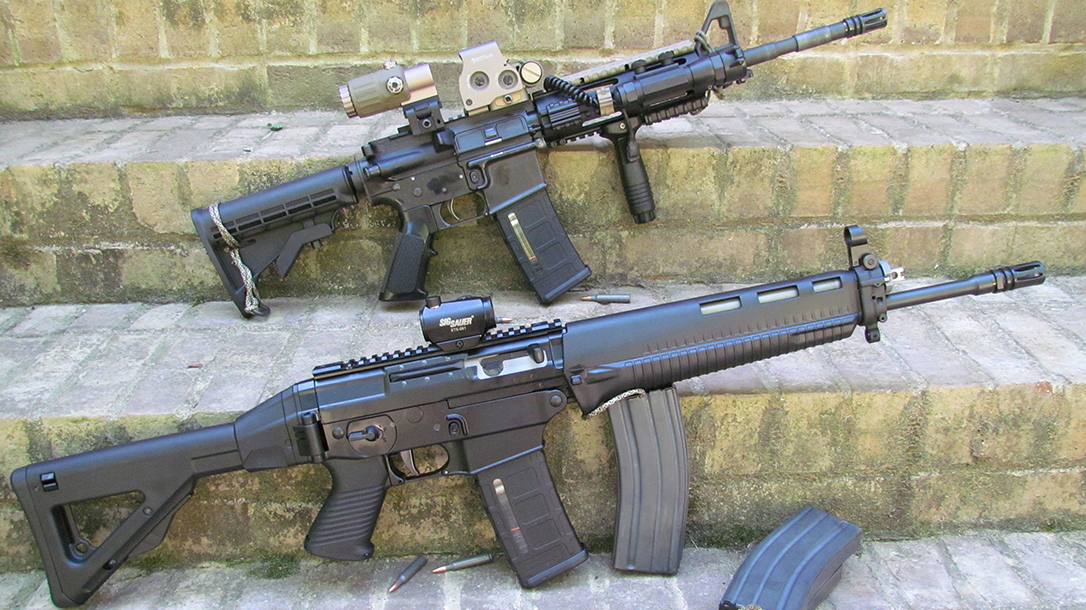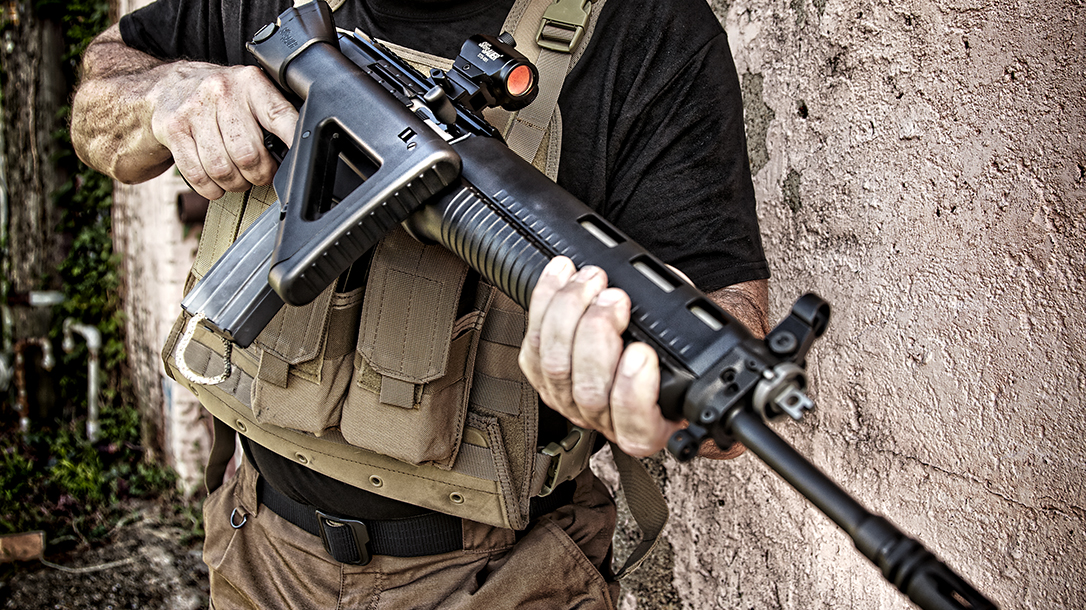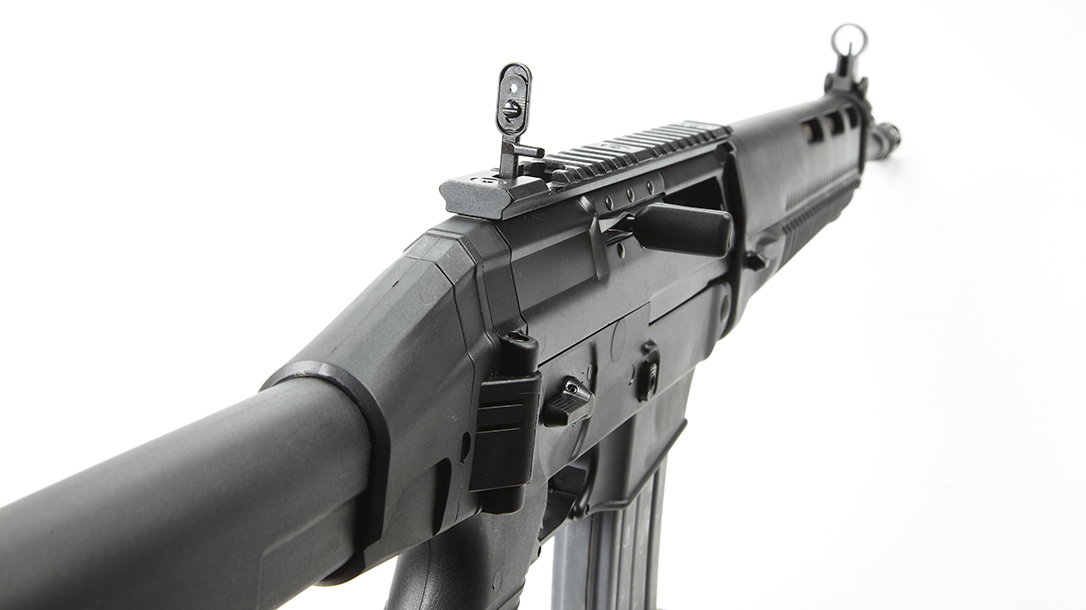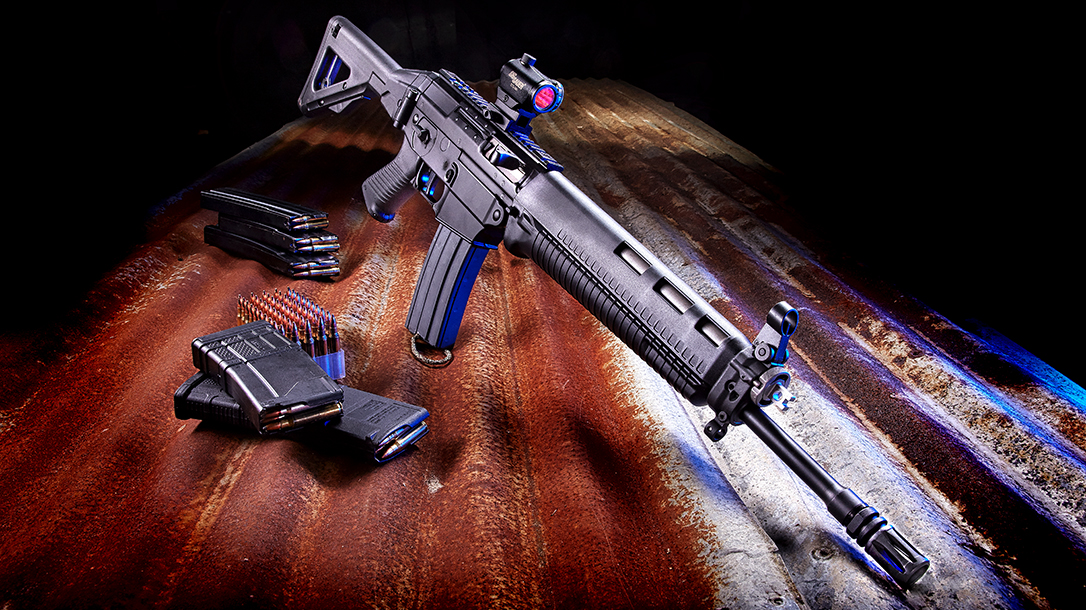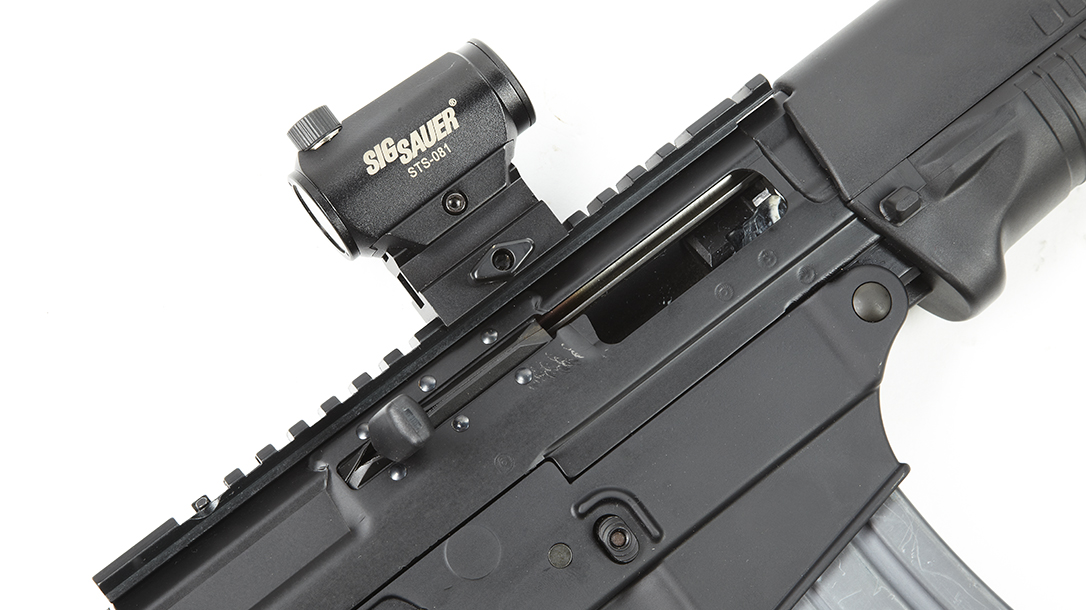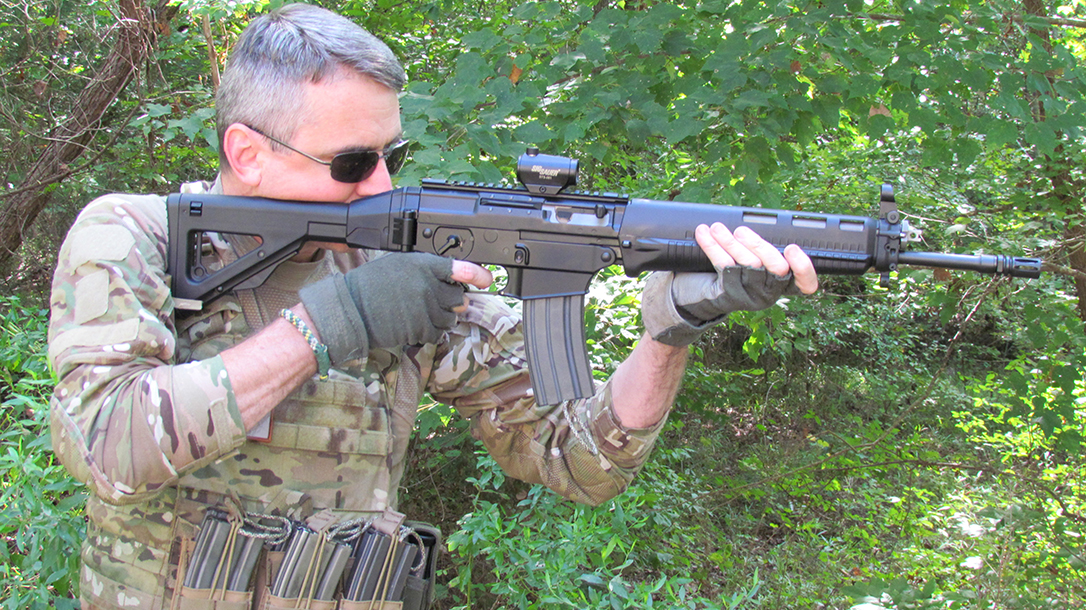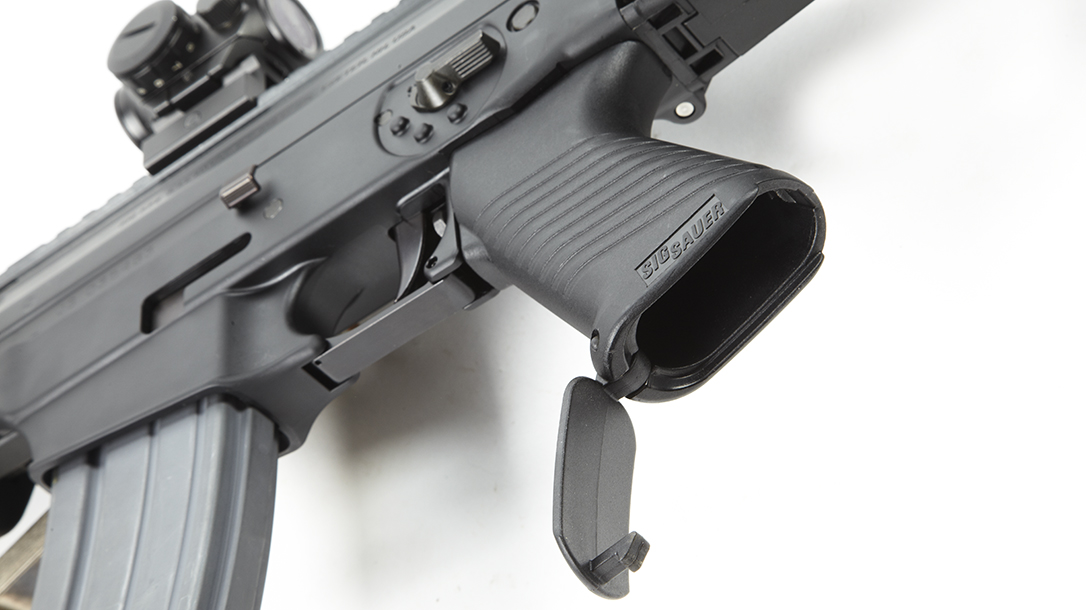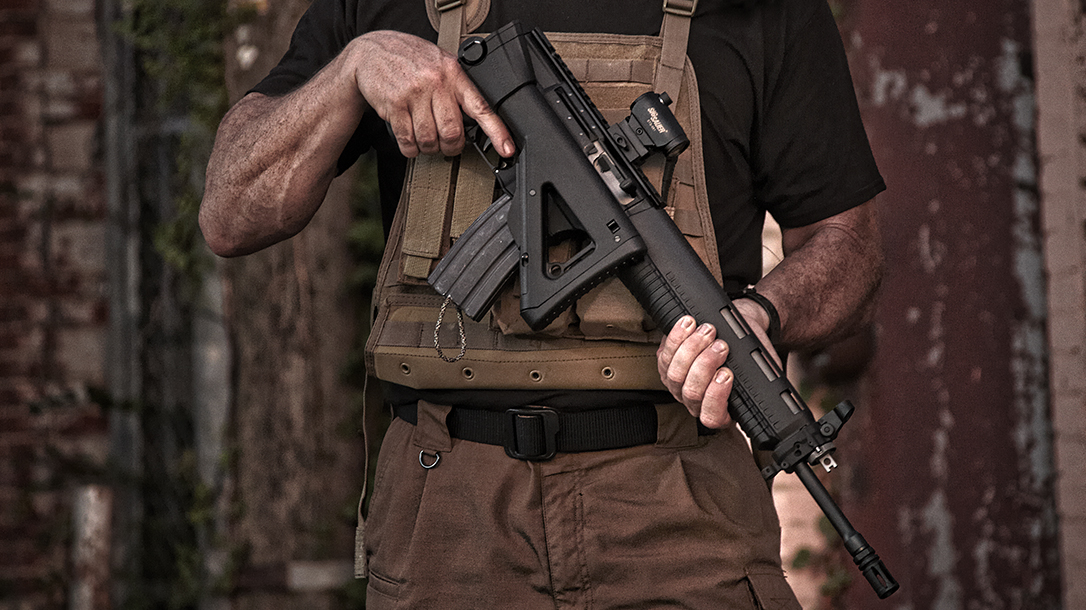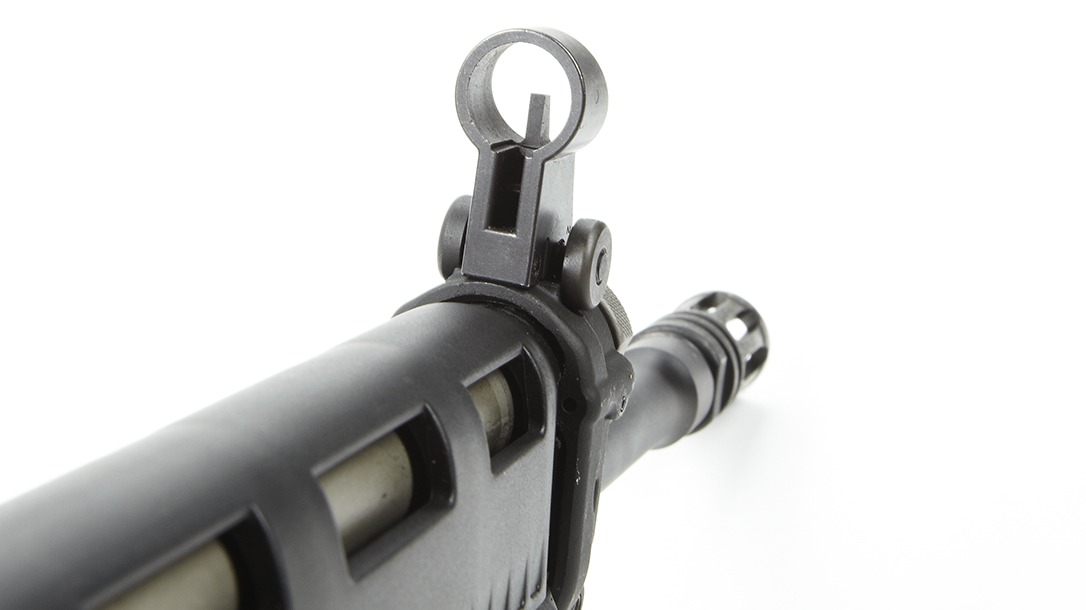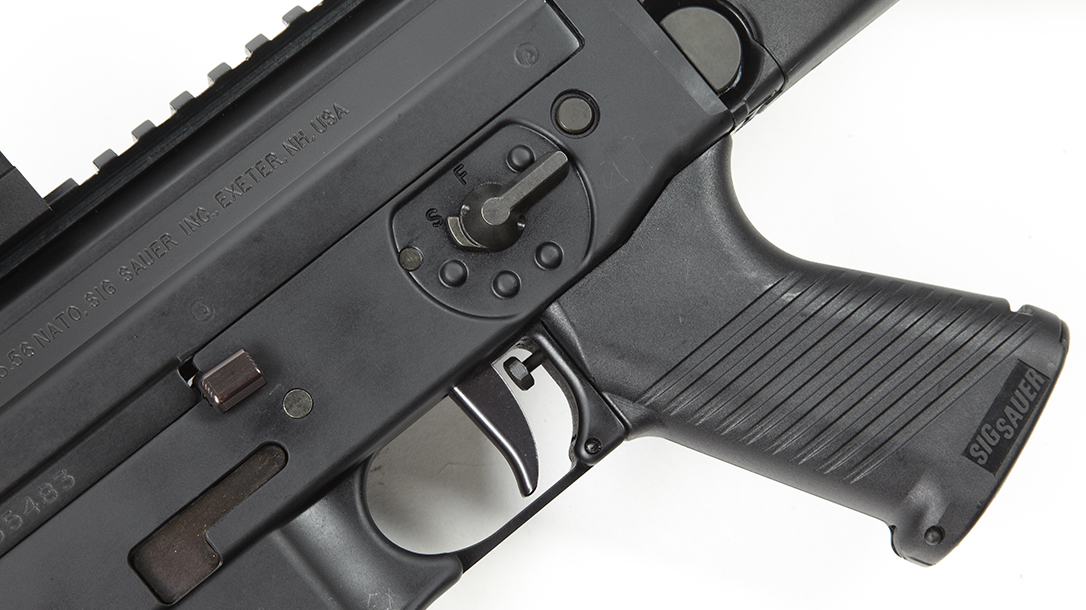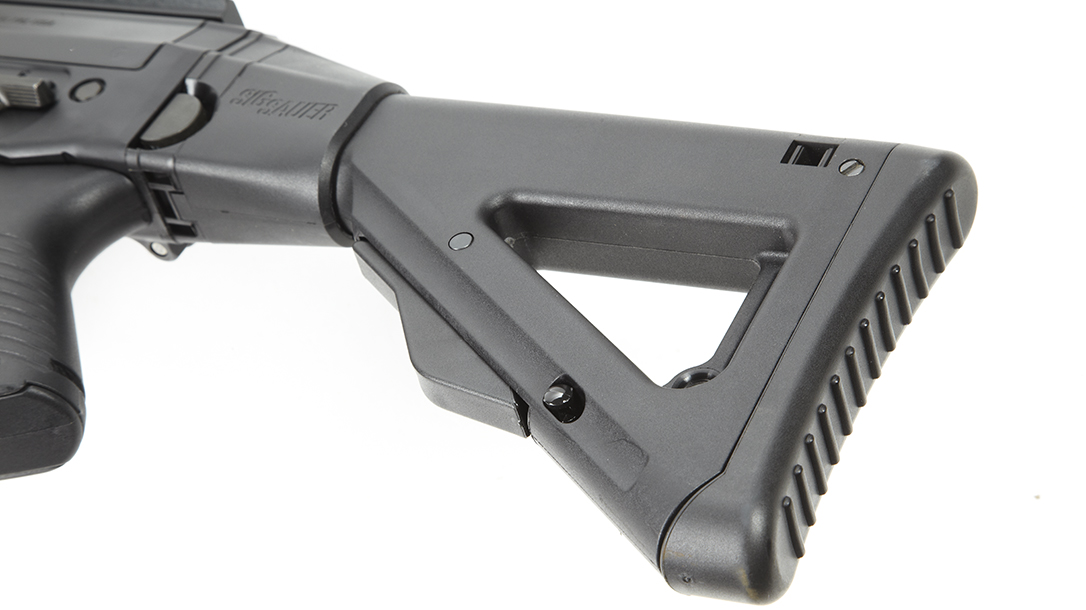The societal fabric of the United States has radically changed in the decade since the expiration of the Assault Weapons Ban. Now it is at least theoretically possible for a law-abiding citizen to carry a handgun concealed for self-protection in all 50 states, and everybody who is anybody seems to own an AR-15. The potential for economic or societal unrest has driven the market for firearms to new and utterly unanticipated heights. Where zombies once were fodder for cheap movies and comic books, now they help sell guns and gear. All the while many foreign gun companies tested the American waters with a toe now and then just to see how it felt, but one company—Sig Sauer of Switzerland—chose to jump in with both feet.
Schweizerische Industrie-Gesellschaft (SIG), or the Swiss Industrial Company, actually began in 1853 by building wagons. After rather unexpectedly winning a Swiss government contract for 30,000 Prelaz-Burnand rifles, SIG launched into an armaments manufacturing enterprise that continues to this day.
Advertisement — Continue Reading Below
Over the decades, SIG entered into agreements with Hammerli of Switzerland and J.P. Sauer of West Germany to expand its product lines and market share worldwide. After liberally supplying both military and law enforcement entities within the United States, the company made a bold move.
While certain other gun manufacturers ignored or even snubbed the U.S. civilian market, Sig Sauer listened to American consumers and invested accordingly. Now the company’s state-of-the-art manufacturing plant in Exeter, New Hampshire, produces handguns, rifles and pistol-caliber carbines specifically for U.S. civilian shooters. More than any other foreign weapons manufacturer, Sig Sauer moved in and made itself right at home, recently tripling its workforce and spending $18 million to expand its American manufacturing capabilities. For example, Sig Sauer’s breathtakingly original semi-auto, pistol-caliber MPX defined an entirely new genre of firearm for American civilian shooters. No other manufacturer, foreign or domestic, has shown that type of grit.
Piston Power
Advertisement — Continue Reading Below
AR-15s are background clutter in most of America these days. In my own community, cops, accountants, physicians, garbage men, lawyers, bankers, college professors and business owners keep at least one at home for a rainy day.
Eugene Stoner’s time-proven design is now outfitted with a bewildering array of accessories as well as two major operating systems. Sig Sauer makes ARs as well, and the quality of the examples I have pawed over is superb. Some of us, however, are just quirky enough to lust after something a bit different. In this case, Sig delivers like none other.
The SIG550 series date back to the Swiss military’s adoption of the Stgw 90 assault rifle in 1983. Incorporating a refined version of Mikhail Kalashnikov’s uber-reliable gas piston action scaled to fit the ubiquitous 5.56mm NATO cartridge, these rifles defended the Swiss frontiers and inspired wanton envy in black rifle enthusiasts on this side of the pond. When semi-automatic imported versions of these rifles could be found, they cost as much as a decent car. Nowadays, however, you can find American-made versions in a broad array of configurations at reasonable prices.
Advertisement — Continue Reading Below
While Sig Sauer no longer offers the SIG556 per se, several variants are still available on the secondary market, including the Classic version, with unadorned handguards and a solid folding buttstock, as well as the tricked-out SWAT variant festooned with rails aplenty and an M4-style buttstock.
I was recently able to get my hands on the SIG556 Classic. I decided to put it up against an AR-15 with comparable capabilities for an apples-to-apples shootout.
Advertisement — Continue Reading Below
The SIG556 Classic has a 16.25-inch, thin-profile barrel and feeds from standard AR-platform magazines. As a result, the rifle can use anything from 1960s-era 20-rounders up to contemporary Magpul PMAGs and Beta C-Mags. The use of the most common ammunition magazine in America was inspired for the designers of this rifle and facilitates its use by any individual or law enforcement agency who already has a ready supply of these magazines.
The SIG556 Classic has a railed upper receiver and synthetic handguards. It also has an exceptionally user-friendly and easily serviceable gas piston operating system. Aftermarket appliqué rails for the Classic forend, as well as dedicated railed forends, are available. The polymer buttstock both extends and folds to accommodate any stature or body armor while facilitating a compact envelope for transport or storage.
The charging handle reciprocates with the bolt and extends from the right side of the receiver for easy access with either hand. The bolt slot in the receiver is protected with a thick rubber skirt to keep dirt and debris out. As this device dates all the way back to the original Stgw 90, it can be assumed to be effective. The safety is ambidextrous and in the expected spot, while the bolt catch and magazine release will be familiar to anyone who has run an AR-platform rifle.
Advertisement — Continue Reading Below
The front sight is protected with a heavy shroud. The SIG556 Classic also has the coolest little flip-up emergency rear sight that folds down into the rail assembly when not in use. My particular test rifle also came with a nifty, compact Sig Sauer Mini Red Dot Sight, which sports the company’s logo in decidedly non-tactical white lettering. The sling mounts are on the side, as they should be. Also, the flash suppressor is closed on the bottom to minimize the amount of dust getting kicked up when firing in dirty environments.
Range Duel
The SIG556 Classic’s opponent for our exercise was an M4 Carbine in GI configuration. The M4 is the ultimate iteration of Eugene Stoner’s classic direct gas impingement M16 rifle. Lithe and trim in its unadorned state, the M4 can indeed become a bit portly after we hang everything but a barbecue grill on the forearm rails. In this case, the SIG556 Classic and M4 Carbine are just about the same size dimensionally and roughly the same weight for easier comparison.
Advertisement — Continue Reading Below
Several hundred rounds and some egregious rolling in the dirt later, the results were in. Both rifles started clean and functioned perfectly without much attention. At the end of the exercise, the action of the AR was filthy and that of the SIG556 was minimally inconvenienced, a fringe benefit of the piston-driven action, which doesn’t vent propellant gases into the bolt itself. Both forends got comparably hot, but neither was problematic. Both carbines also had minute-of-my-tired-old-eyes accuracy potentials, making them perfectly suitable for tactical engagements.
The collapsible stock on the SIG556 makes a much more compact package for storage, and the rifle can still be fired with the stock folded. Both sets of iron sights worked fine, though the front sight hood on the SIG556 did serve as a bit of a distraction when the red-dot sight was employed. But it is easy enough to remove the front sight if desired.
Advertisement — Continue Reading Below
The reciprocating charging handle of the SIG556 was a bonus. I have used an M16 for nearly 30 years now both personally and professionally. I have had a lot of stoppages, typically from filthy weapons in unpleasant environments. There have been times I really coveted some way to manually and vigorously move the bolt back and forth. The reciprocating charging handle is also not an inconvenience when firing left-handed. With an AR-15, brass will hit a left-handed operator in the face without either a dedicated brass deflector or an A2-style upper with the shell deflector built in.
And the Winner Is?
In the end, both of the test rifles are great and will do a simply smashing job of keeping the zombies at bay when they do inevitably come staggering up your driveway. They were fun to shoot and easy to control. Magazine changes are identical between the platforms, and the workmanship on the SIG556 Classic I tested here is literally flawless. And though I have not tested this rifle at the bottom of the ocean or in the frigid arctic tundra, I am convinced that it will likely be as reliable as the multitudinous cruder Kalashnikovs that inspired its design.
Advertisement — Continue Reading Below
So, if you are content maneuvering around the post-apocalyptic wastelands looking like every other survivor, then an AR-15 or M4 clone is more than adequate for the job. Literally 10 million satisfied users cannot be wrong. However, if you want a little something to set you apart as you and your family navigate the minivan through the desolate ruins of an irradiated civilization, you might want to consider the SIG556 series, or even the Sig Sauer’s more modern MCX offerings.
Sig Sauer has earned its reputation for making superb products, and it has invested heavily in us, American civilian shooters. So, it naturally deserves our support.
For more information, visit SigSauer.com.
SIG556 Classic Specifications
- Caliber: 5.56mm NATO
- Barrel:16 inches
- OA Length: 33.5-37 inches
- Weight: 7.8 pounds (empty)
- Stock: Swiss folding
- Sights: Hooded front, flip-up rear
- Action: Piston-operated semi-auto
- Finish: Matte black
- Capacity: 30+1
- MSRP: N/A
This article is from the winter 2018 issue of Ballistic Magazine. Grab a copy at OutdoorGroupStore.com.
